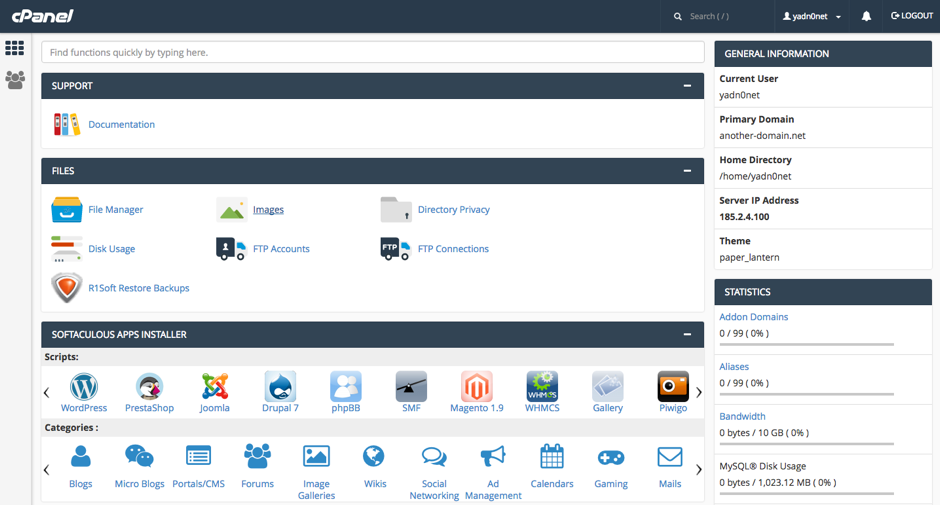
Web servers connect computers to Internet to exchange data. They have software that determines what files are available to users. They can be described as a client-server system. Each computer hosting a website needs to have both web server software, and hardware. Sometimes, web servers are simply called a "server".
Concurrency
Scaling your web site requires that you consider the concurrency that a web server is capable of handling. It is important to understand that front-end productivity isn't what determines how fast your site scales, but the number of concurrent users is the bottleneck. Web servers use estimations of concurrent user count to determine the optimal amount of resources for a site. If the estimate is not accurate, your application may slow to a crawl.

Configuration
Configuring web servers is critical to create a secure, efficient web hosting environment. Administrations should take extra care when configuring their web servers. Many network services are included in typical configurations, including remote registry services and print server services.
GET method
The GET method is best if you're using a webserver to send data to another website. This method can be stored in cache, which is not possible with the POST protocol. It allows you to send large data sets and ASCII data. This method is not recommended to send sensitive information, such as images or word documents. The GET method also has some drawbacks. One is that it does not work with many firewalls. It takes a long time to upload large files.
Nginx
Nginx web server is lightweight and high-performance. It's an excellent choice for hosting high-traffic sites. Nginx is not perfect. It doesn't even allow you to specify where your configuration files are located. Instead, it configures itself by responding to the different patterns of requests.

Apache
Apache is an open source web-server that allows you to manage multiple websites from the same server. This web server supports many languages and has many open source modules that you can add to make your website more powerful. You can use this web server on many operating systems such Microsoft Windows, Linux or Unix.
FAQ
How do you design a website?
Understanding your customers' needs is the first step. What are your customers looking for?
What kind of problems can they have if they cannot find what they want on your site?
Once you know this, you must figure out how to solve those problems. Make sure everything looks good on your website. It should be simple to navigate and use.
Your site should be extremely well designed. It shouldn't take too much time for it to load. If it takes too long, people may not be able to stay as long. They will move on to something else.
When you are building an eCommerce site, it is important to consider where all your products are located. Are they all in the same place? Or are they scattered around your site?
You need to decide whether you want to sell one product at once or many different types of products. Do you want to sell just one type of product or multiple kinds?
You can start building your site when you've decided on these questions.
Now it is time for you to concentrate on the technical aspect of things. How will your site work? Is it fast enough? Is it possible to access the information quickly using a computer?
Can people buy things without having to pay more? Are they required to register before they can buy anything?
These are vital questions you need to ask. These questions will help you to make the right decisions and move forward.
What Types of Websites Should I Create?
Your goals will determine the answer to this question. To build a business around your website, you may want to focus on selling products online. This will require you to set up a strong eCommerce site.
Blogs, portfolios, forums, and other types of websites are also popular. Each one of these websites requires different skills. To set up a blog for instance, you'll need to learn about blogging platforms like Blogger and WordPress.
It is important to choose the right platform for your site. You can find many free templates and themes for every platform.
After you have chosen a platform, it is time to add content. You can add images and videos to your pages.
It is now possible to publish your new website online. Once published, visitors can view your site in their browsers.
What is a website static?
A static website is a site where all content are stored on a server, and visitors can access it via web browsers.
The term "static” refers the fact that there is no dynamic feature such as changing images or video, animations etc.
This site was initially designed for corporate intranets, but it has been adopted by individuals or small businesses who desire simple websites that don't require complex programming.
Because they are less maintenance-intensive, static sites have gained popularity. Static sites are easier to maintain and update than fully-featured websites with multiple components (such as blogs).
They also load quicker than their dynamic counterparts. This makes them great for those who have slow Internet connections or users with mobile devices.
In addition, static sites are more secure than their dynamic equivalents. A static website is impossible to hack. Hackers have only access to data stored in a database.
There are two main options for creating a static website.
-
A Content Management System (CMS),
-
Static HTML Website Creation
It all depends on what you need. If you're new to creating websites, I recommend using a CMS.
Why? It gives you full control of your website. You don't even need to hire someone for help setting up your CMS. All you need to do is upload files to the web server.
You can still learn to code and make a static website. But you'll need to invest some time learning how to program.
Statistics
- The average website user will read about 20% of the text on any given page, so it's crucial to entice them with an appropriate vibe. (websitebuilderexpert.com)
- When choosing your website color scheme, a general rule is to limit yourself to three shades: one primary color (60% of the mix), one secondary color (30%), and one accent color (10%). (wix.com)
- It's estimated that in 2022, over 2.14 billion people will purchase goods and services online. (wix.com)
- It's estimated that chatbots could reduce this by 30%. Gone are the days when chatbots were mere gimmicks – now, they're becoming ever more essential to customer-facing services. (websitebuilderexpert.com)
- Did you know videos can boost organic search traffic to your website by 157%? (wix.com)
External Links
How To
Drupal 7: How to Use It for Web Design
Drupal is one of most well-known Content Management Systems (CMS), available today. It was developed in 2003 by Dries buytaert of Belgium. The name of the site is derived by Dirk Buijtewaard's surname and Pierre d'Herbemont's surname. Drupal was opened source in 2005. Since then there have been many versions. Drupal is used worldwide by many websites and businesses.
There are several reasons why Drupal is so popular among website owners. First, it is free to download and install. It's also very easy to customize it and extend it. Third, it is well-documented. It also provides excellent support via forums and IRC channels. Fifth, it can be expanded via modules. Sixth, it supports multiple languages. It can be easily customized. Eighth, it's scalable. It is safe. Tenth, it is reliable. It is also supported by the community. Drupal is the perfect choice for your next projects because of these features.
You might be wondering what makes Drupal unique from other CMSs. It is very simple. Drupal is an Open-Source Content Management System. Drupal is completely free and can be downloaded freely. Drupal gives you complete control of your website. You have complete control over your website. You can add or delete pages.
If you want to create a website but lack technical skills, then you can choose Drupal. You don't have to be a programmer to build your website, unlike other CMS. Only you will need to be able to use the basic functions of Drupal. You will then be able modify your website to suit your needs.
Another benefit of using Drupal is its many pre-built themes and plugins. These plugins help you to enhance your site's functionality. To gather contact information from your visitors, you could use the Contact Form Module. Google Maps is another option to show maps on your website. Drupal comes with thousands of pre-made templates. These templates give your site a professional look.
Drupal is also flexible. Drupal supports many different modules, so you can easily add or remove them from your website without worrying about compatibility. If you are looking to integrate social networks into your website, this is possible quickly. You can also create RSS feeds and e-mail subscriptions.
Drupal can also be customized. You can add custom fields and forms, manage users, and more. Drupal is capable of creating complex layouts.
Drupal is stable and reliable. It is stable and scalable. Also, it offers excellent security features. Drupal is an excellent web development platform.